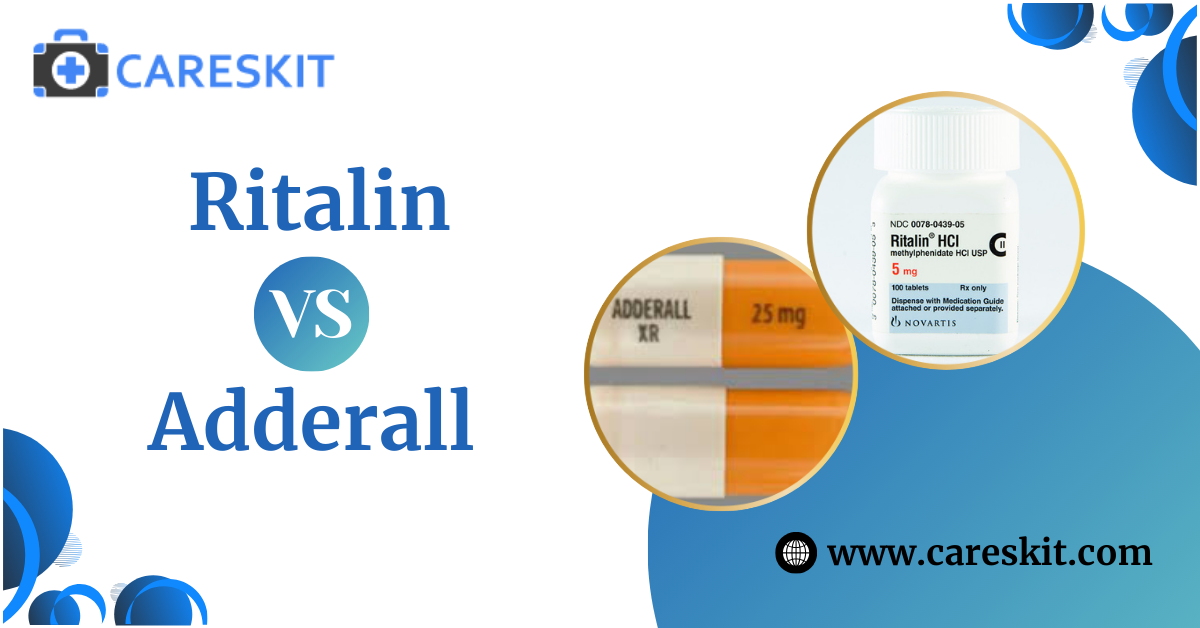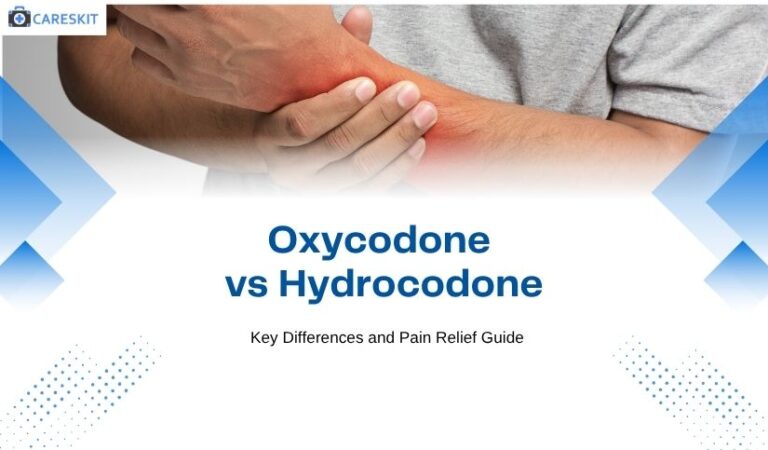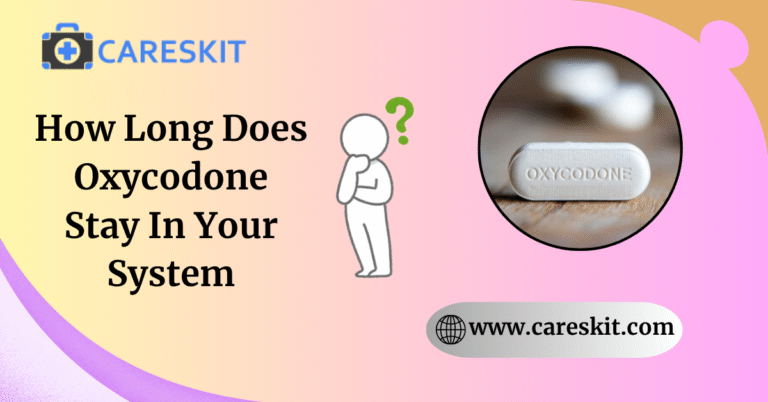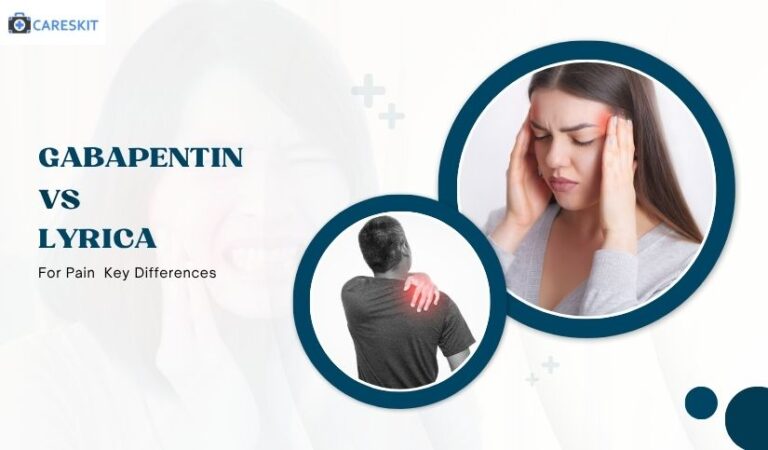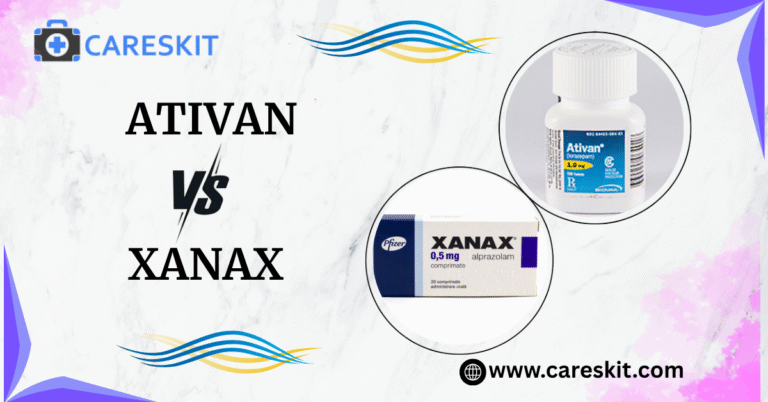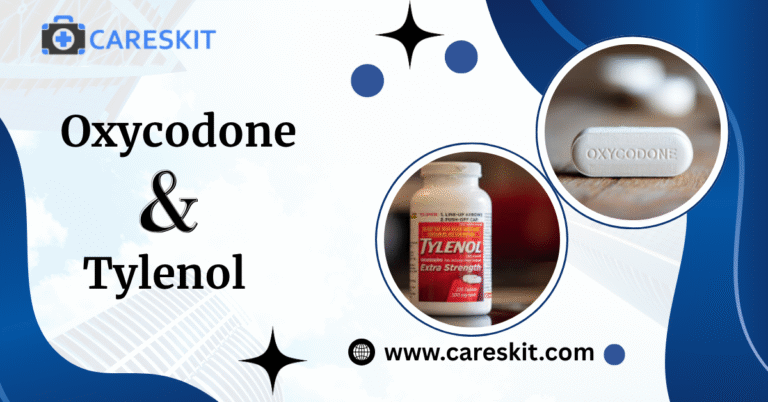Ritalin vs Adderall: Which ADHD Stimulant Works Best?
Ritalin and Adderall are two prescribed CNS stimulants medications used to treat ADHD Attention-Deficit/Hyperactivity Disorder and sometimes for narcolepsy. Most people used it according to prescription for stay focus, attention, and impulse control. Both drugs can effectively reduce these symptoms but they work differently and can cause different side effects. If the first one you try doesn’t work enough or causes various side effects, then your doctor can switch to another medication. These drugs are very effective and need healthcare provider caution before you take them.
In this blog, we will compare Ritalin vs Adderall in terms of effectiveness, side effects, and duration, and also discuss the mechanism of action, chemical composition, dosage conversion, and which one increases OCD more, so that you can make an informed decision.
Understanding Ritalin and Adderall
Ritalin and Adderall are both stimulant medications used to manage ADHD and sometimes narcolepsy symptoms in adults and kids. These drugs work well to produce potential effectiveness but they have different formulations, mechanisms, and side effects to reduce symptoms. Knowing which medications are right for you is decided by your healthcare provider according to your health conditions.
What is Ritalin?
Ritalin is a powerful prescription medication used for the treatment of ADHD. It comes in both short-acting and longer-acting forms. Most of the healthcare providers prescribed IR tablets are usually taken two to three times in a day while long-acting tablets are taken just once a day.
What is Adderall?
Adderall is a combination of two medicines that stimulate the brain to decrease ADHD and narcolepsy in adults. Similar to Ritalin, it also increases chemicals present in the brain, which leads to enhanced focus, attention, and impulse control. It is prescribed to be taken in the mouth in the form of a tablet or capsule to reduce ADHD symptoms and it usually takes an hour or above to kick in the system and lasts up to 12 hours.
Alternatives
Adderall and Ritalin both medications work well to manage ADHD and sometimes narcolepsy but sometimes both can produce lower effects. Therefore, most healthcare providers prescribe alternative options that produce potential effects at lower doses. These alternatives are
Differences
While comparing Adderall and Ritalin both are stimulant medications used to manage ADHD and narcolepsy, but they differ in several aspects according to individuals’ health conditions. Some differences are listed below to help both patients and doctors for choosing appropriate dosage.
- Adderall and Ritalin are two powerful prescription drugs used to manage ADHD and narcolepsy, but these are not the same. They belong to the same drug class but contain different chemicals that affect the brain differently.
- Ritalin is available in both short-acting and long-acting tablet forms and starts its work within 10 to 20 minutes and lasts up to six hours while Adderall also comes in both forms and takes 30 to 60 minutes to kick in the system and lasts up to 12 hours.
- Ritalin is commonly prescribed for kids and adults due to its shorter effectiveness and lower misuse profile while Adderall is only prescribed for adults, as its longer action makes it an appropriate choice to manage ADHD.
Treatment of ADHD in Adults
Both Adderall and Ritalin can be effective for the treatment of ADHD in adults according to health conditions. Most doctors prescribed ER formulations for long-term treatment. Many professionals and college students find Adderall XR particularly helpful due to its longer duration.
Adults may be more sensitive to:
- Cardiovascular side effects (especially with Adderall)
- Sleep disturbances
- Appetite loss
Treatment of ADHD in Kids
Both Ritalin and Adderall are FDA-approved for use in kids aged six and older. Some studies show that children may respond better after taking these medications and both doctors and parents must try both drugs before starting for a long period.
Ritalin is most popularly used in younger children due to its quick effects and easier adjustability
But Adderall is often used in school-aged children and teens who have difficulty focusing throughout the school day.
Dosage of Ritalin and Adderall
Ritalin and Adderall are two powerful medications used for the treatment of ADHD and sometimes narcolepsy. So before you start any ADHD medications first consult your healthcare provider for better treatment.
Dosage of Ritalin
Ritalin is also called methylphenidate drug and it is a strong ADHD medication that provides instant relief from ADHD. It is available in two strengths that are:
Dosage of Adderall
Adderall is a prescription drug used for ADHD and it should be taken under healthcare provider. It comes in both IR and ER formulations. Most healthcare providers prescribed Adderall ER tablets for long-term treatment.
IR Formulations:
XR Formulations:
- Adderall XR 30 mg
- Adderall XR 25 mg
- Adderall XR 20 mg
- Adderall XR 15 mg
- Adderall XR 10 mg
- Adderall XR 5 mg
Side Effects of Ritalin and Adderall
Both medications have similar side effects including common and serious reactions due to their effective nature. This is helpful for parents with ADHD or anyone considering these medications under the healthcare provider.
Common side effects (shared by both medications) are listed below:
- Dizziness
- Nausea/Vomiting
- Anxiety
- Dry mouth
- Headache
- Decreased appetite
- Stomach pain
- Insomnia
Serious Side Effects (Both Medications) are:
- Circulation problem
- Growth suppression
- Seizures
- Mood changes
- Heart issues
FAQs
What does it do if you combine Ritalin and Adderall?
Together, Ritalin and Adderall are not usually taken unless prescribed by a medical professional specifically because both are brain-stimulating medicines that work in the brain in much the same manner. When taken in combination, they put individuals more at risk for some very dangerous side effects, including heart rate, hypertension, nervousness, and insomnia.
Ritalin and Adderall can show the same in a Standard drug test?
Both medications do not show the same result in standard drug tests because they are chemically different and come in different drug classes. If you have been prescribed these medications first consult your healthcare provider to understand its different drug test methods.
Conclusion
Ritalin and Adderall are both powerful medications used to treat ADHD and narcolepsy. Both medications have potential effectiveness to reduce ADHD in adults as well as kids. Never share your dose with anyone and store it properly to avoid harmful effects. Understanding these blogs are very helpful for both patients and healthcare providers for taking informed decisions according to patients’ health conditions.

